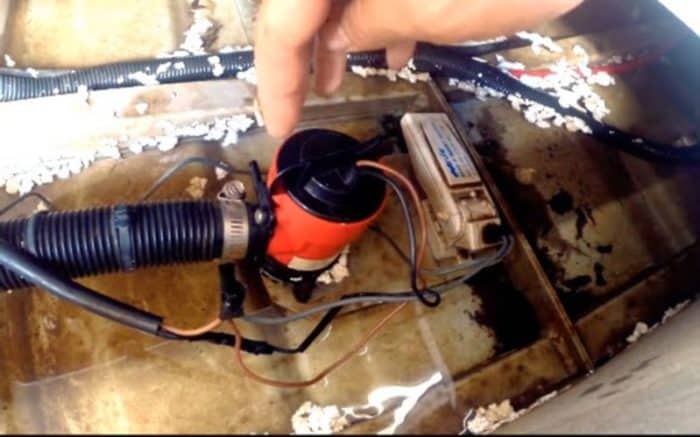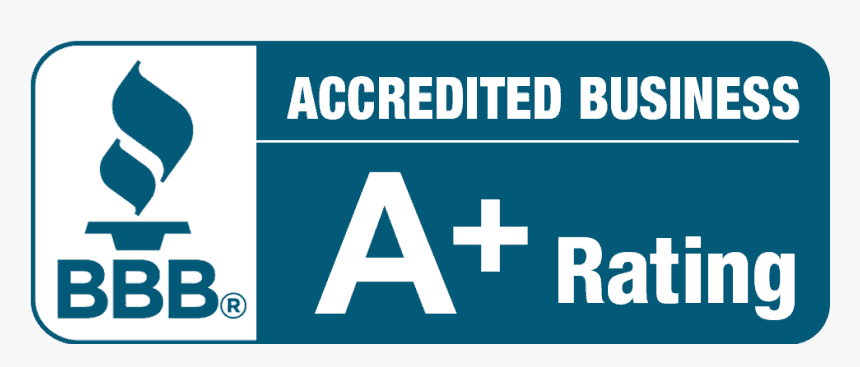U.S. COAST GUARD MINIMUM REQUIREMENTS FOR RECREATIONAL BOATS
This is the current up-to-date list of the U.S Coast Guard’s minimum safety requirements for recreational boats with sizes of up to 65 ft (19.8m) in size. These requirements detail what boating safety equipment must be present on board, and other necessary features that must be installed to comply with federal laws.
It’s worth noting that these are only the minimum requirements, and we recommend that you exceed them if you can. Similarly, these USCG rules are only the federal requirements. Individual states may have additions to this list, with additional equipment and operating standards require on top of these minimum requirements. Check with your local authorities to find out the specifics.
U.S. COAST GUARD MINIMUM REQUIREMENTS FOR RECREATIONAL BOATS
Personal Flotation Devices
For boats smaller than 16 ft (4.9m): One approved Type I, II, III or V (must be worn) PFD for each person on board or being towed on water skis, tubes, etc.
For boats sized between than 16 ft and 65.6 ft (20m): One approved Type I, II or III PFD for each person on board or being towed on water skis, etc.; and one throwable Type IV device. ( A type V PFD may be used in lieu of any wearable PFD if approved for the activity in which the boat is being used. A TYPE V HYBRID MUST be worn to be legal.)
Note: Check state laws for PFD wearing requirements for children and for certain water craft and sports. Federal Regulations mandate that states without child life jacket laws require that youths under 13 wear an approved PFD whenever a recreational boat is underway, unless below decks or in a closed cabin. States with existing regulations are not required to alter their status. Make sure you check your state regulations before getting underway with children onboard.
Bells and Whistles
For all boats smaller than 65.6 ft (20m): Every vessel less than 65.6 ft. (20 meters) in length must carry an efficient sound producing device.
For boats larger than 65.6 ft: On Federally controlled waters, every vessel 65.6 ft. (20 meters) or larger in length must carry a whistle and a bell. They must be audible for 1 nautical mile.
Visual Distress Signals
These visual distress signal requirements only apply for coastal waters, the Great Lakes and U.S. owned boats on the high seas.
For boats smaller than 16 ft (4.9m): They are required to carry approved visual distress signals for night-time use.
For boats above 16 ft but no greater than 65.6 ft: They must carry approved visual distress signals for both daytime and night-time use.
Fire Extinguishers
For boats up to 26 ft (7.9m): One B-I type approved hand portable fire extinguisher. (Not required on outboard motorboats less than 26 ft in length if the construction of the motorboat is such that it does not permit the entrapment of explosive or flammable gases or vapors, and if fuel tanks are not permanently installed.)
For boats between 26 ft and 40 ft (12.2m): Two B-I type OR one B-II type approved portable fire extinguishers.
For boats between 40 ft and 65.6 ft: Three B-I type OR one B-I type PLUS one B-II type approved portable fire extinguishers are required.
Note: When a fixed fire extinguishing system is installed in machinery spaces it will replace one B-I portable fire extinguisher.
Ventilation
Coast Guard requirements on ventilation differ depending on the date your boat was manufactured. The requirements don’t change depending on the size of your vessel, just the date it was built.
Boats built on or after 8/1/1980: At least two ventilation ducts capable of efficiently ventilating every closed compartment that contains a gasoline engine and/or tank, except those having permanently installed tanks that vent outside of the boat and which contain no unprotected electrical devices.
Engine compartments containing a gasoline engine with a cranking motor are additionally required to contain power operated exhaust blowers that can be controlled from the instrument panel.
Boats built before 8/1/1980: At least two ventilation ducts fitted with cowls (or their equivalent) for the purpose of efficiently and properly ventilating the bilges of every closed engine and fuel tank compartment using gasoline as fuel or other fuels having a flashpoint of 110 degrees or less. This applies to boats constructed or decked over after April 25, 1940.
Back Fire Flame Arrestor
One approved device on each carburetor of all gasoline engines installed after April 25, 1940, except for outboard motors. This regulation applies to all recreational boats.
Navigation Rulebooks
All boats over 40 ft in length must carry an up to date copy of the ISDOT ISCG International – Inland Navigational Rules book on board.
Other Things To Consider
It’s worth noting that some states have requirements in addition to the federal requirements. Make sure that you check your state’s boating laws for additional requirements. While these aren’t always mandatory, we’ve put together a short list of things that are essential to keep aboard, no matter what size your boat is.
First Aid Kit
A first aid kit should be kept on board. Make sure it has a selection of band aids and bandages, as well as range of medication.
Tools
Keeping tools on your boat can help you out in a bind. Don’t rely on pocket knives and multi-tools; having the right tool for the job will make minor repairs much easier.
VHF Radio
No boat should leave the marina without some kind of practical communication device. While some boaters are confident enough to leave with just a cell phone, a portable VHF radio will be of far more use in an emergency.
Emergency Fuel And Water
Spare fuel is sensible to have on board. You don’t want to get caught out with an empty fuel tank. Similarly, extra reserves of drinking water should also be kept aboard.
Bilge Pump
While most large vessels will have bilge pumps as standard, we recommend traveling with a manual bilge pump to help bail out water in the event of a power failure. A bucket will also work, but a dedicated bilge pump is a better tool for the job.
Sun Protection
A bottle of sunscreen should be kept along with your first aid kit. There will be at least one occasion when you head out on the water but forget to bring some sun protection.
An Anchor
An anchor and chain may help in an emergency. If you can keep yourself anchored to a single point, it will be easier for authorities to find you. An anchor with enough chain should be kept aboard all recreational boats.
In Summary: USCG’S Required Boat Safety Kit
The U.S Coast Guard’s minimum requirements are just that: the minimum requirement. We recommend that you exceed these requirements where possible. There’s nothing wrong with carrying more PFDs than you need, or equipping more visual distress signals than the rule book says.
Don’t forget, these Coast Guard boat requirements are in place to keep you safe. Besides, if you don’t follow the rules and end up having an accident, your insurance company won’t pay you a dime if you didn’t take the necessary precautions.
For peace-of-mind, we recommend that you contact your neared branch of the U.S. Coast Guard or U.S. Coast Guard Auxiliary for a voluntary Vessel Safety Check.
Categories: nauticalknowhow












15 Comments
Martyn deal on December 29, 2019
Some photos of the required safty equipment would be a big help
Kevin Donoghue on June 5, 2020
How many FAMILY members can we have on our 20 foot boat? Boat safely says 7 people. We are just concerned regarding the COVID regulations.
PEDRO ORTIZ-CHEVRES on June 11, 2020
Would appreciate a list requirements to comply for a (COI) Certificate of inspection for 6 to 12 passenger charter vessel
Kazmierski James F on June 16, 2020
How do you properly dispose of old and outdated flares.
William Burke on September 21, 2022
Shoot them off on the 4th of July
John Foster on March 14, 2023
All firehouses will take them. They use them for training
William Shifter on June 27, 2020
I have a 24 foot bay boat with a 250 hp motor am I required to have a paddle
Merwin Cotton on February 27, 2021
Where should all required equipment be stored on a 20 foot vessel be kept ?
Stephen Whittle on November 29, 2021
My boat is a ranger 2000 520 VX and the name plate rating on it say it’s only rated for a 225 hp motor but per coast guard and vessel over 20 foot is unlimited. Do this law override the name plate if the boat is dated older than the law. Bass Boats now that are over 20 all have 250ho motors. Could I get some info please.
Mike on September 7, 2023
I’m not sure who says it’s “unlimited”, but generally the transom was designed for a certain amount of power/ stress which is generalized as a HP rating for an engine. Although the legal requirements may vary, one can read the nameplate and know what the craft was designed for. Sure, you could probably mount a 450 HP outboard on a boat designed for a 25 HP engine. Is that a good idea? Probably not. And although it might make a funny video, it isn’t the smartest thing to do, hence why they specified a HP rating in the first place.
Robert Hogward on March 3, 2022
I now know on a 15-foot boat which object is required to be on-board. Great article. Most folks have to learn this the hard way.
James Fournier on April 8, 2022
I have a 15-gal fuel only go out once a year; fuel goes bad and was wanting to use a small outboard fuel tank for my diesel . what is not used will go into my truck .Steave at marina told me that it was against coastguard regulation and it would pass inspection and acted like he was part of the coastguard I am a retired wildland fire fighter always trying to be safe and not pollute
Randall Allen Kinas on April 27, 2022
looking for requirements for kill switches on recreational boats. are there new regs out there and what is required on boats under 28 foot?
Joe Lasee on June 9, 2022
Boat is less than 16′. Do I need night visual distress signals if I am only operating in daylight hours?
Justin fretwell on November 9, 2022
Are LED navigation lights up to Coast Guard standards? Do you still have to run the traditional nav light up front if you decide to run LED’s? This is on a 28’ fishing vessel.